First of all, it is worth correcting its spelling. The hyphenated name actually refers to the flow of the Devil's Trench (Ördög-árok) between Nyéki Hill and Kis-Hárs Hill, but it is not customary to mark the valley in this way. And when it appears as one word, it means the part of the city. If the Devil's Trench is mentioned, many people probably think of a respectable canal entering the Danube, a little north of the Buda bridgehead of the Erzsébet Bridge. Well, yes, this is the Devil's Trench, which already suffered from communal sewage two centuries ago. Covered from the Hűvösvölgyi Road, it continues its way all the way to the Danube. But how well it starts: actually the stream of the Devil's Trench flows through the Remete Gorge ('Hermit Gorge') as well.
After the introductions, let us start our exploration tour of the recommended route. It is advisable to take bus 5 to the Pasaréti Square terminus and depart from there. Fortunately, there is plenty of parking space on weekends. We continue on Pasaréti Road between the hills. To our left will be the Pénzügyőr football club's field, which ends at a large intersection.
Here, turning right onto the narrower Pasaréti Road, then going up Cirok Street and finally turning right onto Battai Road we will soon reach the Béla Bartók Memorial House. The Bartók House is worth the detour, but its exhibition is not open at the moment, visitors can temporarily see the exhibitions of other artists in a tight time frame. If it reopens, it is definitely worth a look. Béla Bartók last lived here in today's Budapest.
If we return down the Battai and Cirok Streets to the Pénzügyőr's football field, we should turn right onto Napraforgó Street. This is an interesting location, as it is the experimental housing estate on Napraforgó Street. The villa estate was built in 1931 in the Bauhaus style on a private initiative to alleviate the housing shortage.

%20(1).jpg)
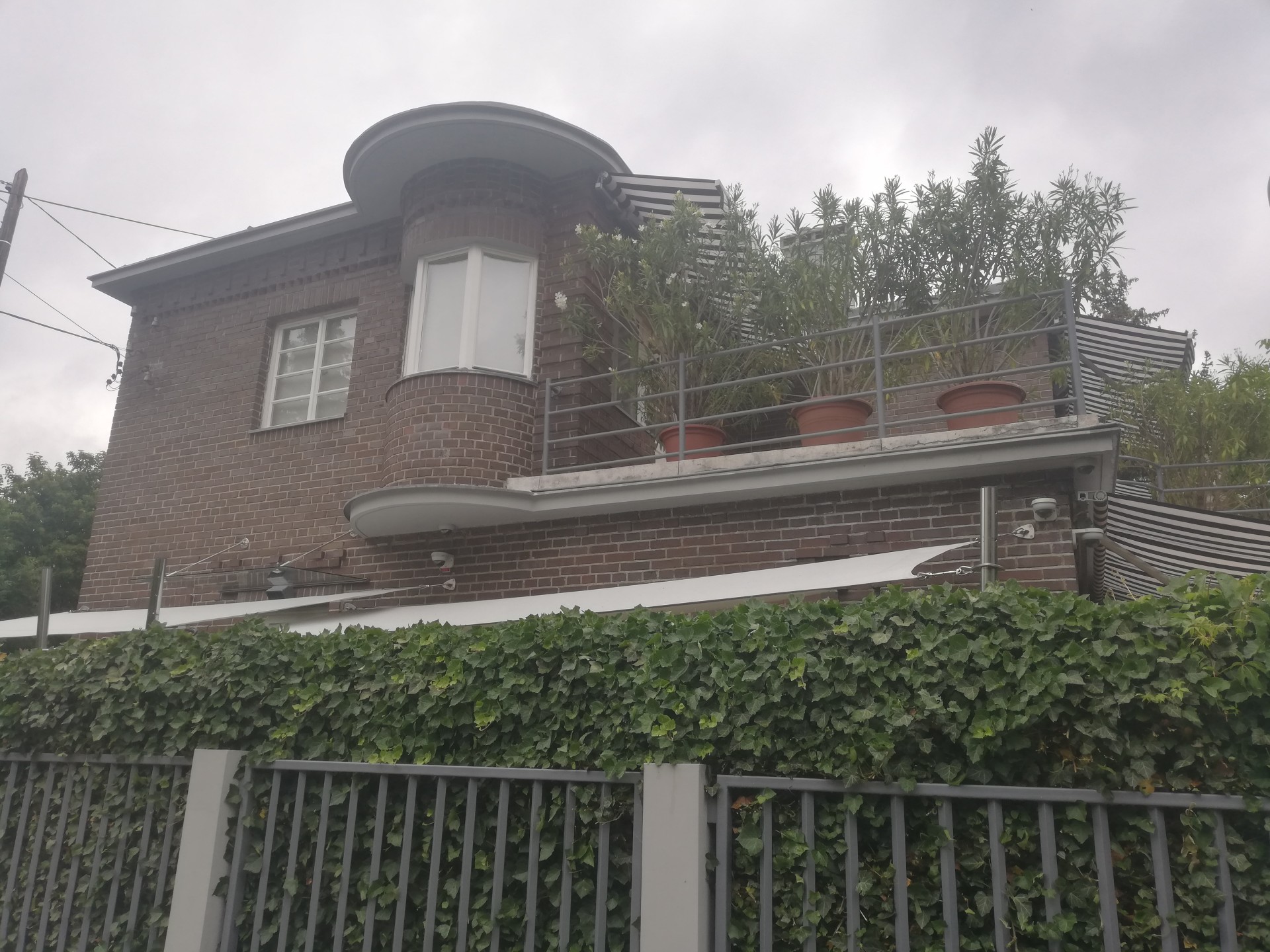
The strange shapes are clearly visible (Photo: Dávid Palotás/pestbuda.hu)
During the concept, the feasibility of detached houses that could be built on plots of a few hundred square metres was a priority. Different geometrical shapes were used during the execution, this can be clearly seen in the square, hexagonal and round shapes, if we walk with our eyes open. Unfortunately, despite the protected status, many corners and arches have been rebuilt, so Napraforgó Street now stands out less from the line of streets with an already suburban atmosphere. However, the dense built-in is definitely noticeable, and a memorial stone also tells us what we can see.
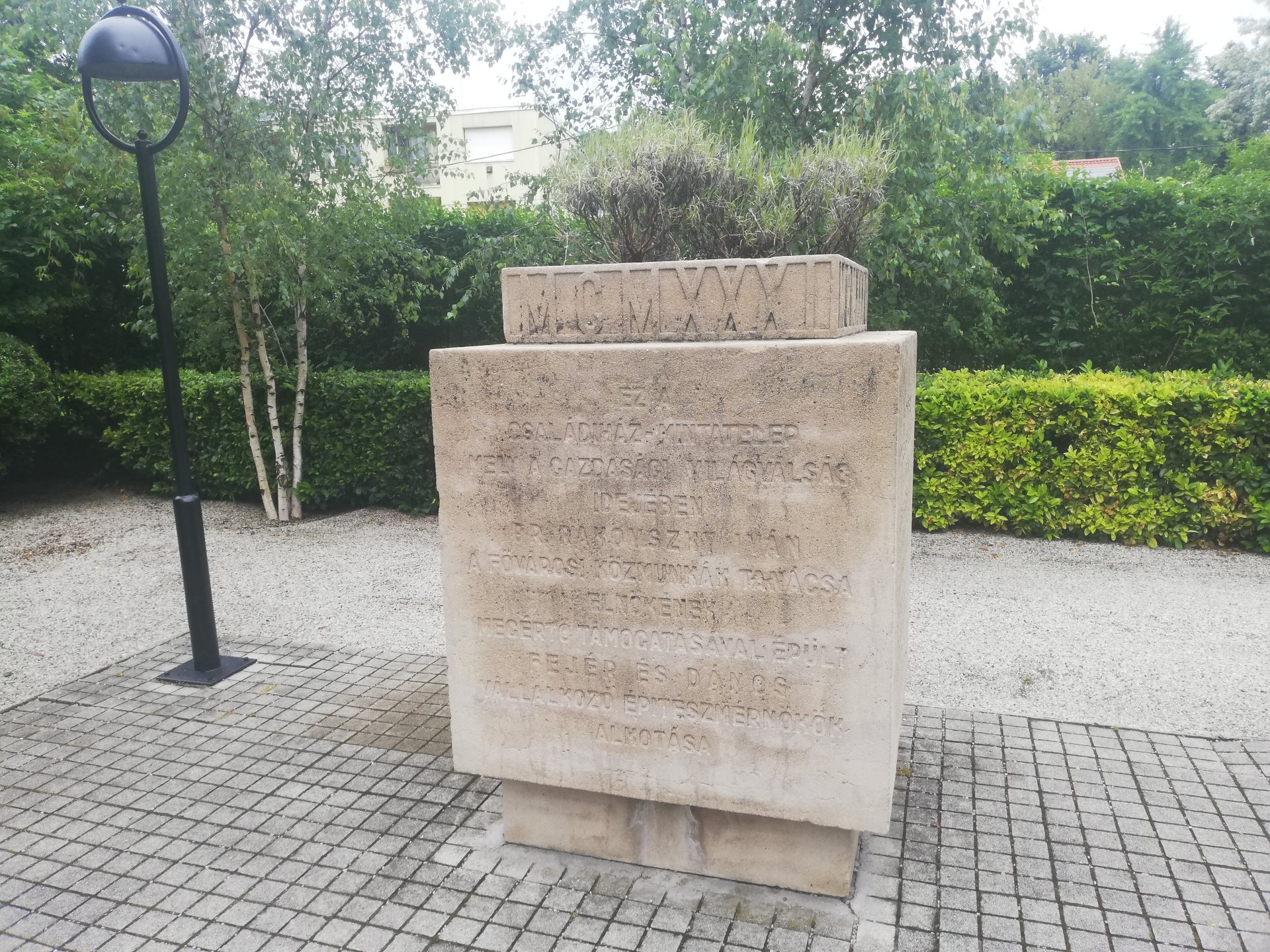
The informative memorial stone has worn off over time (Photo: Dávid Palotás/pestbuda.hu)
If you follow the green streak sign from Napraforgó Street, you will reach the beautiful Apáthy Cliff in about twenty minutes. The view and the beautiful green forest speak for themselves.
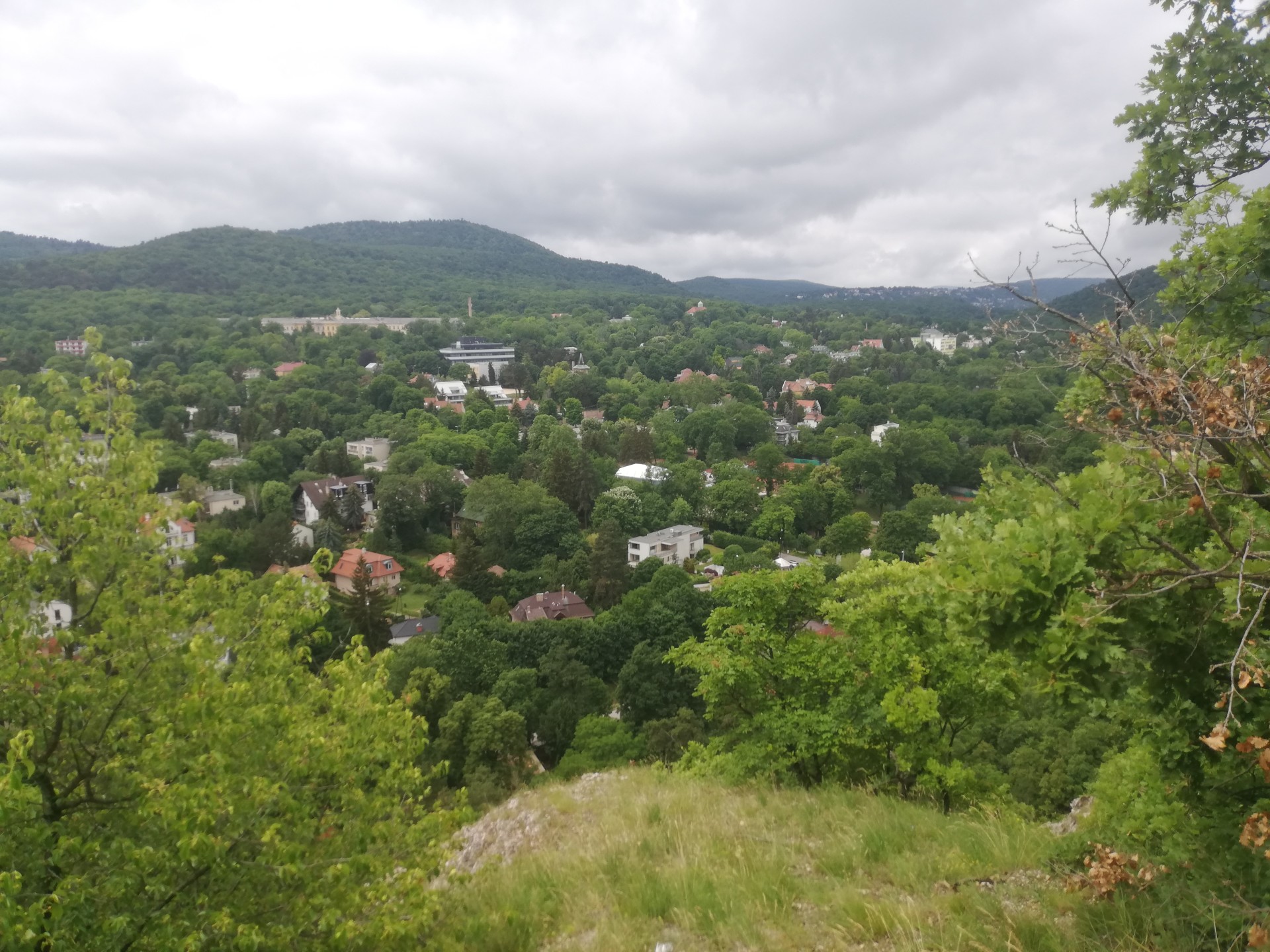
On the left, we can see Nagy-Hárs Hill, in the foreground the huge building complex of the former Lipótmező mental hospital (Photo: Dávid Palotás/pestbuda.hu)
The silhouette of the imposing complex of buildings in Lipótmező dominates the view. Several information boards have been placed on the emerging dolomite trunk.
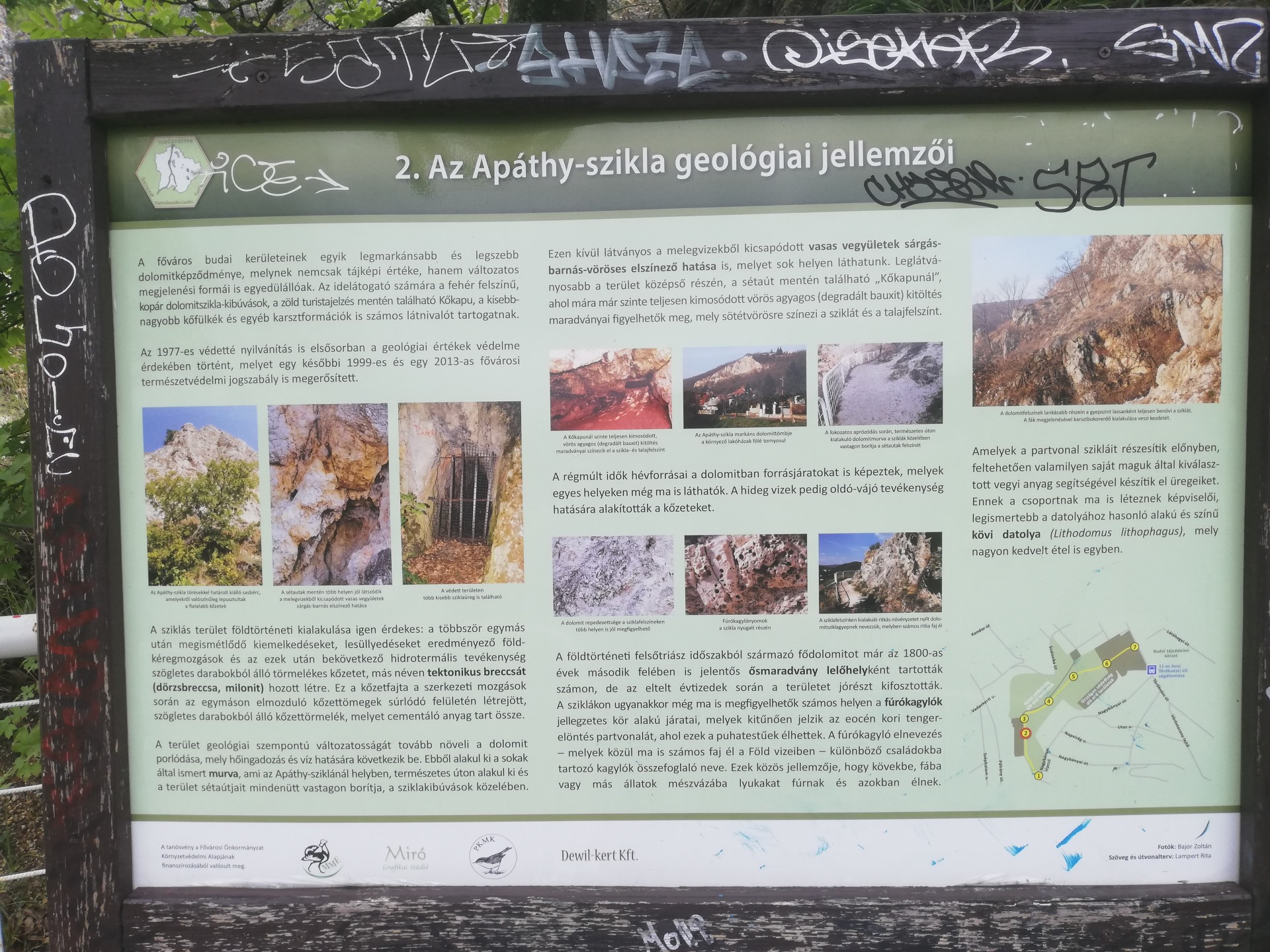
Unfortunately, the information boards are in questionable condition (Photo: Dávid Palotás/pestbuda.hu)
If we continue walking in the woods along the green streak sign, we will first reach a nice rock lookout point and then a cave-like passage. Both formations seem surprising at first, but dolomite and limestone are able to produce all kinds of passages and caves during their weathering.

Strange formations colour the landscape (Photo: Dávid Palotás/pestbuda.hu)
From here, climbing up in the woods, following the green streak, we turn up to the Árpád Lookout Tower. The most iconic lookout point in Budapest after the Erzsébet Lookout Tower. It was built in 1929 according to the plans of Lóránt Fridrich, most of the money was provided by Frigyes Glück. It actually looks the same to this day.
A wide panorama unfolds in front of us from Látó Hill, although slowly the trees will obscure the entire panorama. The lookout point is not at the highest point of the hill, but there are several hiking trails here, for example, the National Blue Trail route passes here, turning back here to the north. The structure of the lookout tower is a real reminder of the folk style and workmanship of a hundred years ago.
.jpg)
Árpád Lookout Tower (Photo: Dávid Palotás/pestbuda.hu)

The view to the south is still good, but the trees are growing (Photo: Dávid Palotás/pestbuda.hu)
If we keep to the left, continue on the blue streak sign, we will reach the Lion's Rock after a kilometre on a roughly horizontal path. It is interesting that even our ancestors thought they had discovered the image of a sitting lion in it, but later it was carved to make it look even more like an animal.
Here we should climb the ridge steeply, but if this is not a friendly solution, we recommend that you continue on the green C sign from the Árpád Lookout to the direction of the ridge. After a kilometre and a half, we will reach a clearing where we turn left at the sign of the Earth-Boring Dung Beetle (Nagyfejű Csajkó) Trail into the pit of a mining cavity.
It is the pit of the quarry of Kecske Hill, which is now a peaceful place: elderberry grows in there, benches await hikers, and even rock-climbing routes have been developed in it. Stone material was taken from this mine to many buildings in Budapest, as well as from the quarry on Róka Hill. The fissure in the middle of the mine is imposing, and standing still for a moment, we can imagine the harsh physical work done here.
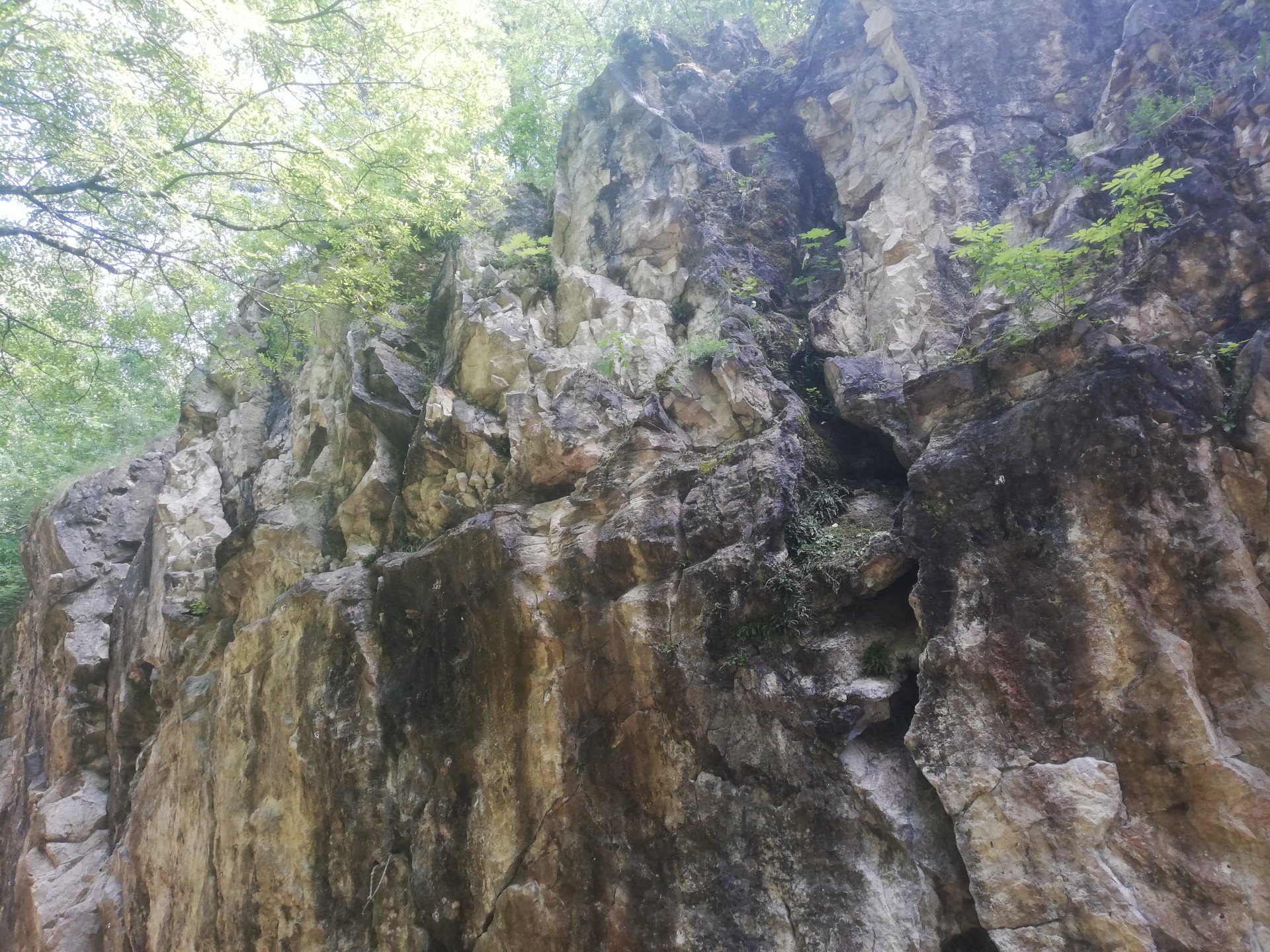
The traces of hand tools can still be seen on the walls (Photo: Dávid Palotás/pestbuda.hu)
On the side of the quarry, a few tens of metres from the benches, a steep path starts, and we have to step on the rocks at the beginning. This trail, which is safe later on, only the beginning is scary, leads up to the top of Kecske Hill, to the wooden cross. It is worth going up to it, because the block of the Three Border Mountain is very nicely outlined, and from here we can easily reach the already mentioned Lion's Rock and the Lion's Cave by walking down the ridge.

The wooden cross peak of Kecske Hill (Photo: Dávid Palotás/pestbuda.hu)
The blue streak sign already passes by the Lion's Rock, and here, if we turn left at the blue sign, we should go down the first or even the second unmarked path to the right between the houses to the corner of Kondor Road and Görgényi Road. A smartphone will help us find the way around, but fortunately the street signs are well placed. If we go down Kondor Road, after a few hundred metres a small park shows up to the left after Madár Street, which branches off to the left. This is the famous Lebanese cedar, Csontváry's The Lonely Cedar was also inspired by one of these.
Cedar is already a rarity in Hungary, but here in Buda, in Hűvösvölgy, the warm-loving, beautiful tree, 20 metres high and 4 metres in circumference, has a particularly strange effect. Its history is not entirely clear, it was falsely connected to Sári Fedák, but it probably comes from the Hubret Family, which runs a pub here. The municipality finally took it under its protection in 1999, the tree is roughly 120-140 years old, experts say. With a stunning view of the solid tree, it is worth relaxing on one of the shaded benches.
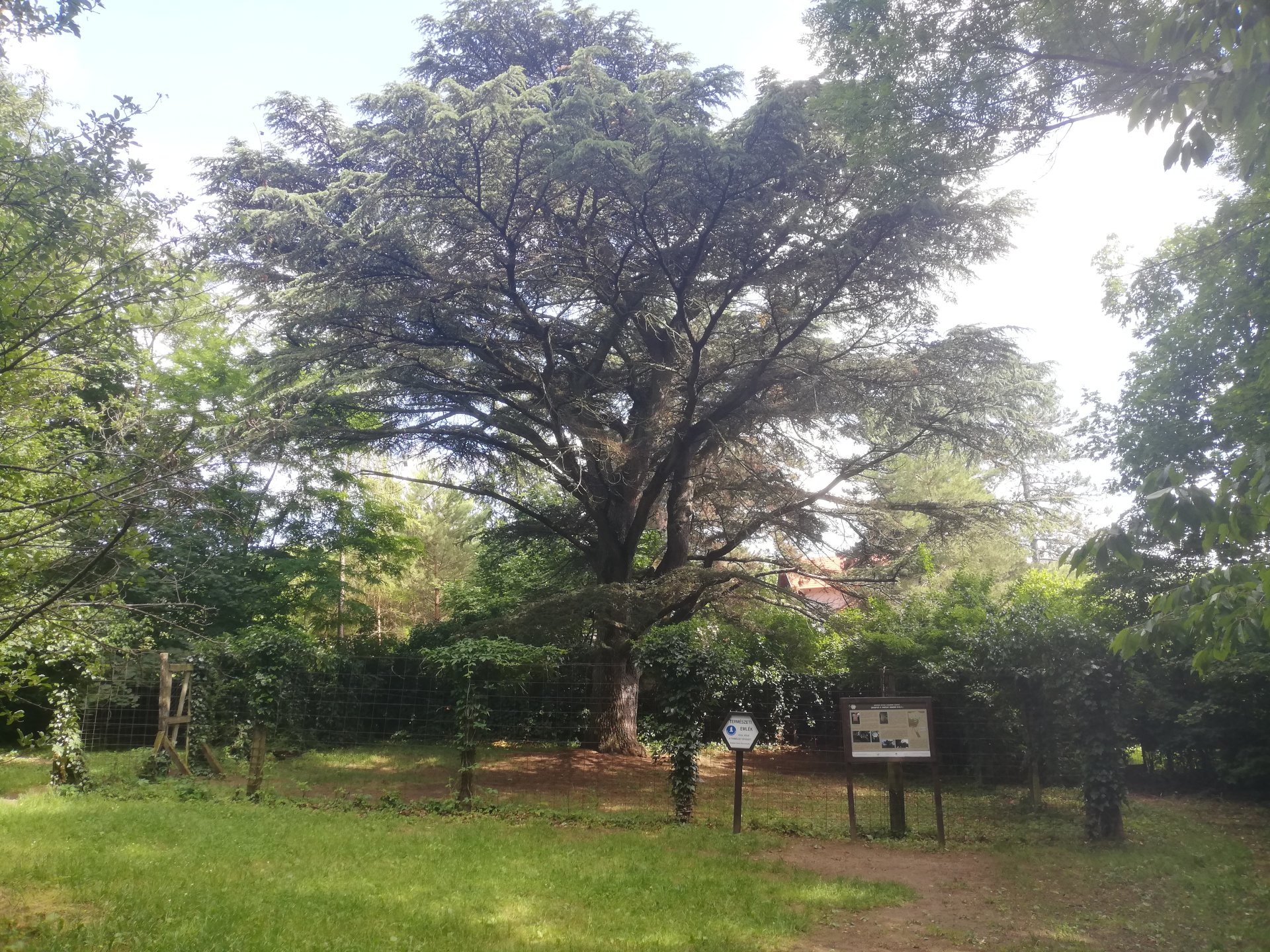
The Lebanese cedar in its full splendour (Photo: Dávid Palotás/pestbuda.hu)
We are slowly walking 6-7 kilometres, so many sights are enough for a day. Getting back to Pasaréti Square is easy from the cedar: at the end of Kondor Road, turning onto Páfrány Road, and passing through it, we will end up on Pasaréti Road. This few kilometres walk shows some of the sights of a small part of the Buda side that we consider worth mentioning. We will still go on walks in the area in the future and try to present the sights and attractions that no longer fit in this hike. Summer is now a better opportunity to visit our well-known and lesser-known natural and naturally occurring built heritage in our capital, so it is worth taking advantage of it.
In the nature and location of the 2nd District, it is as if we are not walking in Budapest, but away from the roaring noise of the city. Let us hope that the suburban character will remain in the future. And the 2nd District, as we can see, is far from just about Rózsadomb (Rose Hill), but that is also worth an article in the future.
Cover photo: The Nagy-Hárs Hill can be seen on the left, in the foreground the huge building complex of the former Lipótmező mental hospital (Photo: Dávid Palotás/pestbuda.hu)



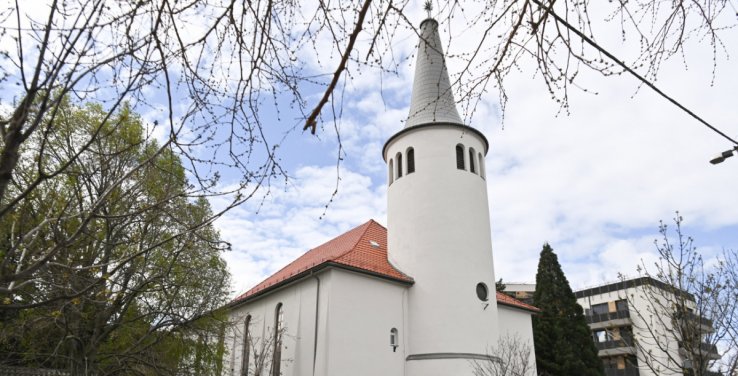
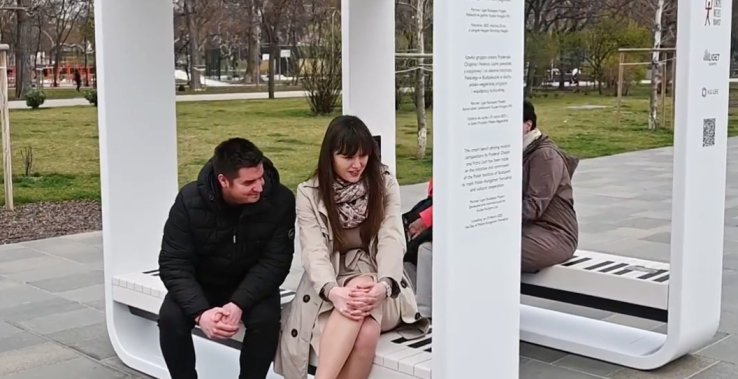

































Hozzászólások
Log in or register to comment!
Login Registration